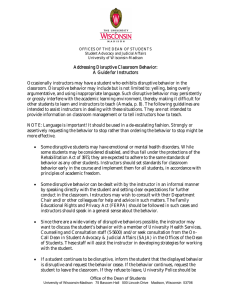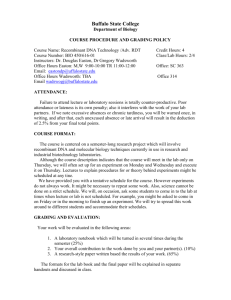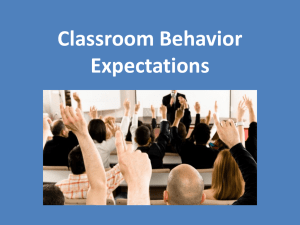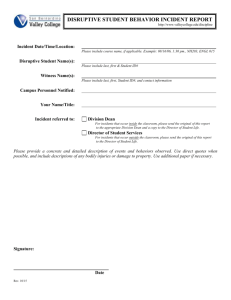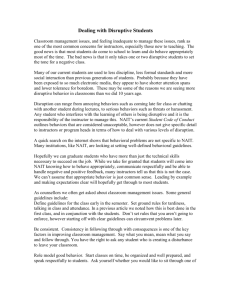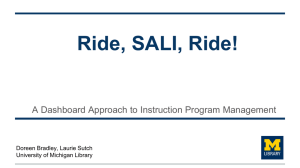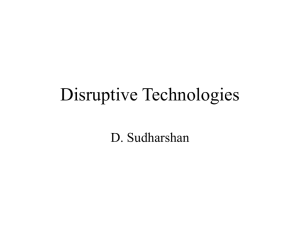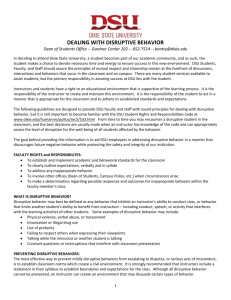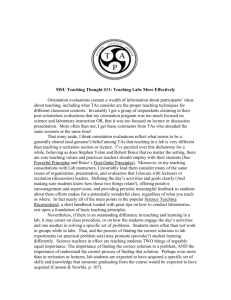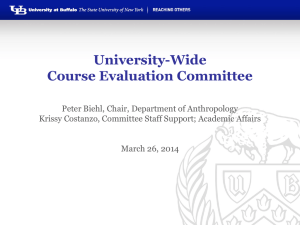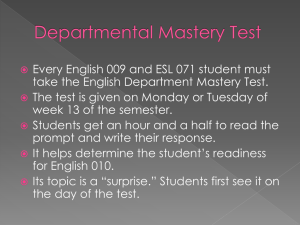Addressing Disruptive Classroom Behavior
advertisement
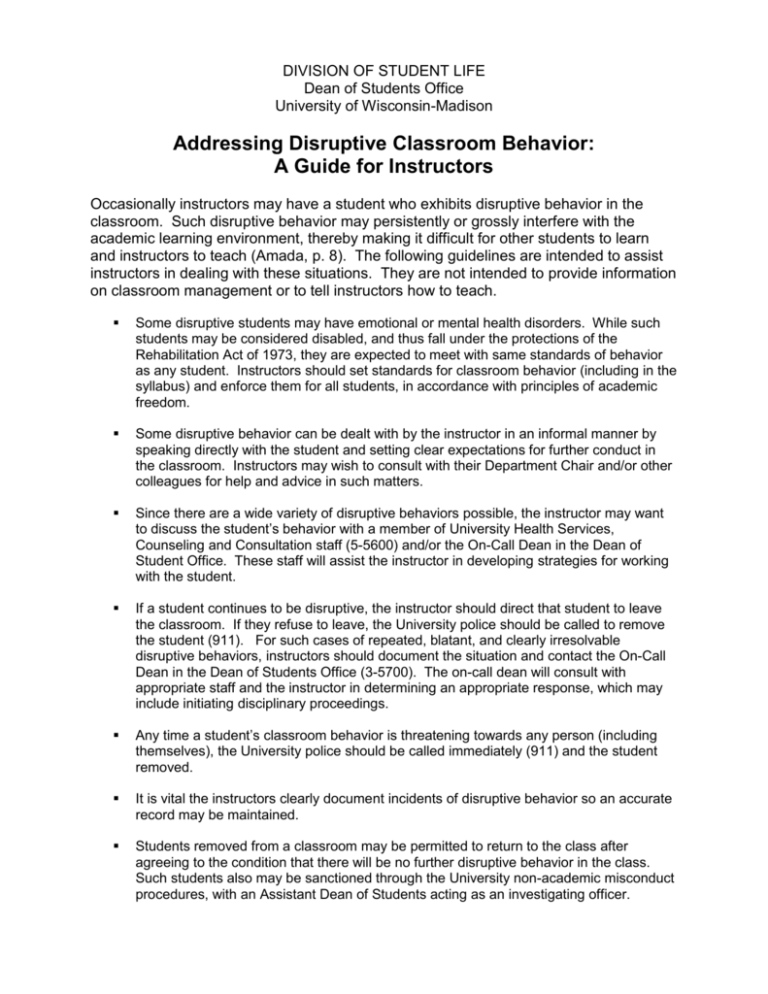
DIVISION OF STUDENT LIFE Dean of Students Office University of Wisconsin-Madison Addressing Disruptive Classroom Behavior: A Guide for Instructors Occasionally instructors may have a student who exhibits disruptive behavior in the classroom. Such disruptive behavior may persistently or grossly interfere with the academic learning environment, thereby making it difficult for other students to learn and instructors to teach (Amada, p. 8). The following guidelines are intended to assist instructors in dealing with these situations. They are not intended to provide information on classroom management or to tell instructors how to teach. Some disruptive students may have emotional or mental health disorders. While such students may be considered disabled, and thus fall under the protections of the Rehabilitation Act of 1973, they are expected to meet with same standards of behavior as any student. Instructors should set standards for classroom behavior (including in the syllabus) and enforce them for all students, in accordance with principles of academic freedom. Some disruptive behavior can be dealt with by the instructor in an informal manner by speaking directly with the student and setting clear expectations for further conduct in the classroom. Instructors may wish to consult with their Department Chair and/or other colleagues for help and advice in such matters. Since there are a wide variety of disruptive behaviors possible, the instructor may want to discuss the student’s behavior with a member of University Health Services, Counseling and Consultation staff (5-5600) and/or the On-Call Dean in the Dean of Student Office. These staff will assist the instructor in developing strategies for working with the student. If a student continues to be disruptive, the instructor should direct that student to leave the classroom. If they refuse to leave, the University police should be called to remove the student (911). For such cases of repeated, blatant, and clearly irresolvable disruptive behaviors, instructors should document the situation and contact the On-Call Dean in the Dean of Students Office (3-5700). The on-call dean will consult with appropriate staff and the instructor in determining an appropriate response, which may include initiating disciplinary proceedings. Any time a student’s classroom behavior is threatening towards any person (including themselves), the University police should be called immediately (911) and the student removed. It is vital the instructors clearly document incidents of disruptive behavior so an accurate record may be maintained. Students removed from a classroom may be permitted to return to the class after agreeing to the condition that there will be no further disruptive behavior in the class. Such students also may be sanctioned through the University non-academic misconduct procedures, with an Assistant Dean of Students acting as an investigating officer. The investigating officer will keep the instructor and student informed the status of any disciplinary proceedings, especially in regard to any return of the student to the class. The removal of a student from a class, voluntarily/involuntarily, and/or temporarily/ permanently; is a serious step, not to be taken lightly, and therefore must be handled utilizing whatever due process is appropriate. There may be situations occurring outside the classroom where instructors feel threatened or very uncomfortable with a student’s behavior. Instructors should report these situations to the Dean of Students Office (3-5700) and/or the University police (911) so appropriate interventions can happen before the matter escalates. Another good resource on disruptive students is Coping with the Disruptive College Student: A Practical Model by Gerald Amada, PhD. Nothing in these guidelines is intended to infringe upon the academic freedom of instructor or student. Two fundamental principles to observe: 1) Students have the right to express opinions germane to the subject matter of a course; 2) Instructors have the right to guide classroom discussion and to set reasonable limits on the classroom time made available to students for the expression of their opinions. The responsibility for striking a balance between these principles rests with instructors.
